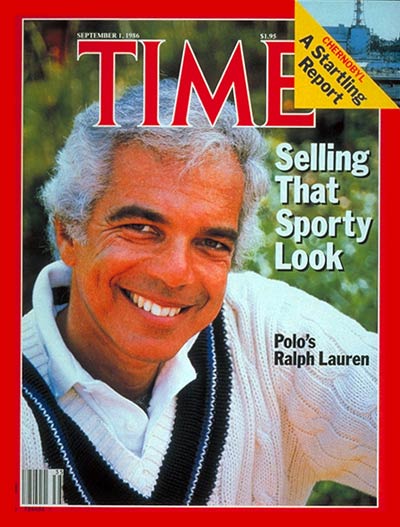The Genesis of New Age Music
TIME Magazine Article:
"Music: New Age Comes of Age"
"Dreamy soundscapes offer relief from formula pop and rock"
This is an article that appeared in “America’s news magazine” TIME on Sept. 1, 1986. This was the first time that a national news magazine had published an article about the genre of music being called “new age” that was at this time surfacing nationally.
It has been called “aural wallpaper,” “music for the Birkenstock crowd” and “yuppie elevator music.” Its titles evoke a holistic, hot-tubbing world: Etosha — Private Music in the Land of Dry Water, Aerial Boundaries, Nirvana Road. Although its composers include musicians prominent in the rock avant- garde, it is marked by a meditative aesthetic whose goal is often creative anonymity. A laid-back synthesis of folk, jazz and classical influences, it is called, by rough convention, New Age music. But what exactly is it?
“New Age music is the sound track for the movie of the mind,” says English-born Rocker Eddie Jobson, formerly of Roxy Music and U.K. and now a leading New Age pianist and composer. “It is music that springs from a world culture,” says Lucia Hwong, a Chinese American whose music turned up in the 1985 movie Year of the Dragon.

Trying to define the style reduces Anne Robinson, a cofounder of the New Age record label Windham Hill, to “stringing words together that sound like an exotic disease identified by a German doctor. New acoustic classical jazz? New acoustic impressionistic music?”
However it is defined, New Age has arrived. Five years ago, few outside Northern California had ever heard of it, but today the unthreatening, alpha- state instrumental music is not only found in record stores across the nation but wafts from speakers in chic boutiques and fancy bookshops as well. Like its predecessors, Muzak and Mantovani, New Age music is easily disparaged. Yet music that relaxes need not be devoid of content. Bach composed the Goldberg Variations to ease the slumbers of an insomniac, and his contemporary, Telemann, wrote reams of Tafelmusik, music intended as background to dining. Quality is not necessarily restricted by function.
Though no firm figures are available, it is estimated that New Age music today accounts for up to 2% of record and tape sales. The percentage may seem small, but it compares favorably with that garnered by classical music.
Windham Hill, the West Coast label that has become synonymous with the new style, last year grossed $25 million. In a hard-driving business, Windham Hill’s success is anomalous, for the label is rarely heard on the radio, and it advertises only occasionally. Instead, it relies on word of mouth among its target audience of young white professionals. It must be doing something right: Pianist George Winston, perhaps the best known of its largely faceless roster, has been on Billboard’s Top 40 jazz chart a total of 184 weeks with his album December, a user-friendly amalgam of Bach, Satie and Jazzman Keith Jarrett.
Last year a challenge to Windham Hill’s hegemony sprang up with Private Music, a label founded by Peter Baumann, former keyboard player of the rock group Tangerine Dream. Two of Private Music’s early releases are among the best New Age albums so far: Rock Violinist Jerry Goodman’s high-flying On the Future of Aviation and the anthology Piano One, which features hypnotic solo performances by Jobson and Japan’s Ryuichi Sakamoto, among others. “I like to ; describe the music as very visual,” says the Berlin-born Baumann. “One important aspect is the absence of lyrics, which gives the listener a much wider range of associations.”
This was TIME Magazine's idea of what new-age healing and meditation music was all about:
Associations, in fact, are the key to understanding New Age music. Perhaps mindful of Stravinsky’s famous dictum that music is emotionally neutral, many contemporary composers of serious music have sought to expunge all extramusical references from their work. New Age music, on the other hand, is frankly, if often banally, evocative: of waterfalls, wheatfields, even the mysterious but benign resonance of deep space. All nature is grist for its mill. Former Bebop Jazzman Paul Winter, who is now making New Age records, lists his inspirations as he “African mbira (a hand-held instrument played with the fingers or thumbs) as well as the sounds of the humpback whale, eagle and the timber wolf.” If much of the music does not actively demand attention in the way that Beethoven or even the Beatles do, it does require some imagination on the part of both composer and listener.
New Age embraces a surprising variety of musical styles. Most regressively Californian are the environmental soundscapes of Steve Halpern, 39, a New Age pioneer with 35 albums to his credit. Then there are the grandiose synthesized symphonies of Jean-Michel Jarre (Oxygene) and the film scores of Vangelis (Chariots of Fire, Blade Runner). There are the strongly defined melody and deceptive, stutter-step 5/4 rhythm of Jobson’s piano waltz Disturbance in Vienna, which also turn up on his new synthesizer album Theme of Secrets. There are the down-home guitar serenades of Folk Veteran Leo Kottke. And there is Hwong’s dreamy, Asian-inflected music, which in her album House of Sleeping Beauties weds such disparate instruments as the shakuhachi (a traditional Japanese flute) and the synthesizer to create a delicate, free-flowing hybrid of est and West.
Its appeal is similarly diverse. New Age is the perfect music for washing one’s BMW, which accounts for its stereotyping as yuppie Muzak. But, notes Hugh Ashcraft, owner of a record store in Charlotte, N.C., “we have a wide range of people buying this stuff. There’s a good number of old hippies, and mothers and grandmothers.” Jenny McEwen, a Charlotte nurse, listens to New Age music on Sunday nights because “it dissipates the dread of Monday mornings. I find myself actually looking forward to the week.”
The best New Age music, however, feeds a largely unarticulated hunger for an alternative to juvenile rock ‘n’ roll and formula pop. As much of rock has degenerated into pallid imitations of Led Zeppelin, and the wallets and midsections of the baby boomers have fattened with age, new vistas in pop music have opened up. Major labels such as Warner Bros. and CBS, which releases the recordings of Harpist Andreas Vollenweider, are issuing New Age recordings, and Gramavision has signed up New Age Musicians Steve Halpern and Kitaro.
New Age is still too young and stylistically inchoate for any assessment of its ultimate worth. But its appeal is wide. “I wouldn’t be surprised if some farmer in Iowa listens to George Winston while plowing his fields,” says Keith Eckerling, a record-store-chain vice president in Chicago. And its possibilities are promising. In multiracial, heavily Asian California, an authentic fusion of Oriental and Occidental music has been under way since Composer Lou Harrison experimented with the Balinese gamelan orchestra before World War II. And the healthy interaction between the rock and “classical” avant-gardes, which bore fruit a decade ago in the creative synergy between Tangerine Dream and minimalist composers like Philip Glass, may produce more music of lasting value, just as when jazz first captured the imaginations of composers like Ravel and Gershwin. Whatever happens, it will be a step up from Wham! and Ozzy Osbourne. “New Age fans don’t want to feel they are mellowing out,” says Howard Wuelfing, a New Age distributor in New Jersey. “Just maturing.”
